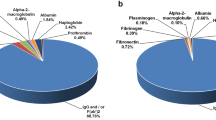Abstract
In 2017, the second national reference standard (NRS) for Gloydius snake venom was established to replace the first NRS for Gloydius snake venom. In connection with the second venom NRS, a candidate for the first NRS for Gloydius snake antivenom was produced in 2017. In this study, the qualification of the candidate was estimated and the potency was determined by a collaborative study. The potency (anti-lethal titer and anti-hemorrhagic titer) of the candidate was determined by measuring the capability of the antivenom to neutralize the lethal and hemorrhagic effects of the second NRS for Gloydius snake venom, which was calibrated against the regional reference standard for Gloydius snake antivenom established in 2006. Two Korean facilities contributed data from 20 independent assays. Subsequently, one foreign national control research laboratories participated in this collaborative study. The general common potency of the anti-lethal and anti-hemorrhagic titers was obtained from the results of a total of 25 tests performed at three facilities. According to the results of the present study, the candidate preparation showed good quality and is judged to be suitable to serve as the first NRS for Gloydius snake antivenom with the following potency: an anti-lethal titer of 3100 unit (U) (95% confidence interval 2991–3276 U) and anti-hemorrhagic titer of 3000 U (95% confidence interval 2849–3159 U). In conclusion, the first NRS for Gloydius snake antivenom was established in this study. This reference standard will be used routinely for quality control of a snake antivenom product by manufacturer in Korea, which also can be used for national quality control, including a national lot-release test of the snake antivenom product.

Similar content being viewed by others
References
Kasturiratne A, Wickremasinghe AR, de Silva N, Gunawardena NK, Pathmeswaran A, Premaratna R, Savioli L, Lalloo DG, de Silva HJ (2008) The global burden of snakebite: a literature analysis and modelling based on regional estimates of envenoming and deaths. PLoS Med 5:e218
Lim H, Kang HG, Kim KH (2013) Antivenom for snake bite in Korea. J Korean Med Assoc 56:1091–1103
Gumprecht A, Tillack F, Orlov NL, Captain A (2004) Asian Pit vipers. Geitje Books, Berlin, p 368
Eble JA (2010) Matrix biology meets toxinology. Matrix Biol 29:239–247
Kosuge T (1968) Biological toxicity of mamushi-snake venom (Agkistrodon halys) and morphological changes caused by the venom. Kitakanto Med 18:353–379 (in Japanese)
Teteno I, Sawaki Y, Makino M (1963) Current status of mamushi snake (Agkistrodon halys) bite in Japan with special reference to severe and fatal cases. Jpn J Exp Med 33:331–346
Omori T, Iwanaga S, Suzuki T (1964) The relationship between the hemorrhagic and lethal of Japanese mamushi (Agkistrodon halys blomhoffii) venom. Toxicon 2:1–4
Gutiérrez JM, León G, Lomonte B, Angulo Y (2011) Antivenoms for snakebite envenomings. Inflamm Allergy Drug Targets 10:369–380
Korea Food and Drug Administration (2011) Minimum requirement for biological products (in Korean)
Fukuda T, Iwaki M, Hong SH, Oh HJ, Wei Z, Morokuma K, Ohkuma K, Dianliang L, Arakawa Y, Takahashi M (2006) Standardization of regional reference for mamushi (Gloydius blomhoffii) antivenom in Japan, Korea, and China. Jpn J Infect Dis 59:20–24
Yoo SH, Park SJ, Kim SN, Hong CM (2004) Establishment of venom standard for potency test of Agkistrodon antivenom. Biol Prod Saf Monitor Rep 4:19–26
Han K, Jung K, Oh H, Song H, Park S, Kim JH, Min G, Lee BH, Nam H, Ato M, Kim YJ, Jeong J, Ahn C (2018) A collaborative study to establish the second Korean national reference standard for snake venom. Toxicol Res 34:191–197
World Health Organization (2010) WHO guidelines for the production control and regulation of snake antivenom immunoglobulins. World Health Organization, Geneva. https://www.who.int/bloodproducts/snake_antivenoms/snakeantivenomguide/en. Cited 1 January 2017
Reed LJ, Muench H (1938) A simple method of estimating fifty percent endpoints. Am J Hyg 27:493–497
Guidelines for national authorities on quality assurance for biological products. In: WHO Expert Committee on Biological Standardization. Forty-second Report. World Health Organization, Geneva. 1992, Annex 2 (WHO Technical Report Series, No. 822)
Xu Y, Myers EA, Wang L, Huang S, He Y, Peng P, Guo P (2012) Molecular phylogeny of the genus Gloydius (Serpentes: Crotalinae). Asian Herpetol Res 3:127–132
Kawashima Y (1974) Study of the immunological relationships between venom of six Asiatic Agkistrodons. Snake 6:16–26
Acknowledgements
The authors acknowledge Sun Hwa Choi and Young-Jin Lee (Quality control Team, Korea Vaccine Co., Ltd., Korea), Dr. Mayuko Okabe (Department of Immunology, National Institute of Infectious Diseases, Japan) for participating the collaborator study.
Author information
Authors and Affiliations
Corresponding author
Ethics declarations
Conflict of interest
This research was supported by a Grant from the scientific research program (18201MFDS174) and a grant-in-aid (MFDS 4000-4031-301-210-13) at the National Institute of Food Drug Safety Evaluation of the Ministry of Food and Drug Safety, Republic of Korea. None of the authors of this paper has a financial or personal relationship with individuals or organizations that could inappropriately influence and bias the content of the paper.
Rights and permissions
About this article
Cite this article
Han, K., Song, H., Choi, C.W. et al. Standardization of the first Korean national reference standard for snake (Gloydius brevicaudus) antivenom. Toxicol Res. 36, 407–413 (2020). https://doi.org/10.1007/s43188-020-00047-0
Received:
Revised:
Accepted:
Published:
Issue Date:
DOI: https://doi.org/10.1007/s43188-020-00047-0




